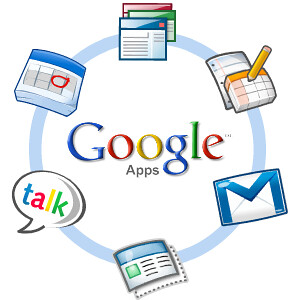
Software and compatibility issues have been a thorn in the side of educational technology for years. I can remember when I was a Technology Coordinator and a student would get a new computer for Christmas and sometime in January or February of the next year they would bring in a disk with a paper that they had typed on their new computer and try to print that paper at school. The paper wouldn't print.... why? Because most PC's came with Microsoft Works, instead of Microsoft Office, which was the word processor that was installed on the machines at school. There were several ways to work around this, but it was difficult and frustrating for both the student and their teacher. It reinforced the idea in the minds of students and teachers that using technology in class was hard and difficult. This was also an issue that occurred on Macintosh computers as well, since there were many schools where the only Apple based computers were in a lab dedicated for some type of creative content creation. (Video, Graphics, Multimedia, etc. ) This is no longer the case..... The issues with Microsoft and Apple will still exist, but one simple way around it is to use Google Docs and other Google Tools. If you have Google Apps for Education, you have some pretty cool free instant add-on's that will provide even more tools and services for FREE.
So, looking at all of the things that schools and students spend their money on, software is no longer something they should spend their money on for students or teachers. Google tools are also better because they are available 24/7/365, absolutely anywhere there is a computer and an Internet connection. (See my last post about "Where are Your Black Holes")
Here are the applications that most schools currently use and what are their free Google equivalents.
- Microsoft Word - Google Documents: Can upload and download .doc and .docx files.
- Microsoft Excel - Google Spreadsheets: Can upload and download .xls and .xlsx files. There are fewer functions available in the Google Docs version of the spreadsheet, but it is enough for most users. There are also some very cool Google Formulas you can use.
- Microsoft PowerPoint - Google Presentations: Can upload and download .ppt and .pptx files. One of the benefits of Google Presentations, is that it is much easier to add images and video into your presentation.
- Besides the typical applications, Google also has G-Mail, Calendar and Sites, which all integrate with the other Google Apps. For example, you can attach a document to a Google Calendar entry or you can integrate a Google Form, a YouTube Video or a Google Calendar into a Google Site.
The newest set of Google Tools comes from another company that has intentionally built their set of tools to quickly and nicely integrate into the Google Apps platform. The Aviary Suite of content creation tools. If you have a Google Apps EDU domain, you can even have the Aviary Suite integrate into the Google Docs menu and you can save all of these files in your Google Docs account.
- Photoshop (picture editing) - Google does basic image / picture editing with Picasa and Picnik, but in Google Apps EDU you can add on Aviary and use the Phoenix and Raven applications within Aviary to create layer based vector graphics like Photoshop creates.
- Screen shots: Microsoft and Apple both have basic screen capture tools within the operating system and there are some good free tools like "Skitch" to do screen shots and then edit and annotate them, but you can also use Falcon and Talon from Aviary, which are add-on's for the Firefox and Chrome browsers that will produce screenshots and the tools to annotate them.
Garage Band / Audacity - Aviary also has tools to edit Audio and create Music. Roc for music creation an Myna to edit audio files for podcasts.
So, with all of these free tools, there is no limit as to what you, and your students, can do with a computer and an Internet connection. Everything I have mentioned in this post is free. What could you do? What will you do? How will this change the way you teach? I would like to hear from you. Post a comment with your ideas and suggestions.



1 comment:
Amen, I'm with you!
Post a Comment